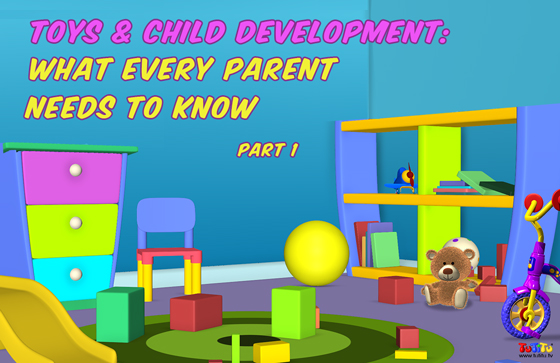Today’s kids are growing up with a huge selection of toys and games. More and more variation are being produces of… well, anything you can possibly think of, really. In the US alone, 2013 saw $22.09 billion worth of sales in toys, according to TIA.
Many of these toys are indeed educational and can benefit your child a lot – but in which ways? Choosing your toddler’s playthings, you want to make sure they get the best of the best and that the play with toys that can help them develop, but you may not be sure how to make that choice.
Well, TuTiTu is here to help! In this special article series we will be going through many different toys and telling you all about what your child can gain from them. We will also be looking at TuTiTu’s 3D animation videos for kids about those toys!
Wooden Blocks
There’s a reason why wooden blocks are such a basic component of nurseries around the world. They may seem simple but those shapely pieces of wood are highly important for your child’s development. They help kids learn to differentiate between different shapes, sizes and colors (and even textures in some special sets.) They help them learn counting and the concept of amounts: of more blocks on this side than on that side, etc.
They benefit motor skill development when the child stacks them on top of each other but at the same time they also benefit his or her language development, teaching them concepts like “above”, “under”, “on the top” and so on.
Wooden blocks also set the ground for basic understanding of physics and science. What happens when you stack blocks on each other and then try to remove the bottom one? Or just push at them? And how come it’s easier to balance a block on two other blocks at its ends than on one small block under its middle? All of these will come in handy some years later.
Kitchen Set
Your children – both girls and boys! – can learn a lot from playing with a kitchen set, on various different levels. In terms of language, there are a lot of new verbs and vocabulary to be acquired here about everything involving the preparation and consumption of food. Like with the wooden blocks, there are also basic concepts to be learnt here: the cake can be inside the oven, the milk is on the counter, etc.
Additionally, a kitchen set is an opportunity to practice following instructions and pretend play. Understanding and executing tasks is an important skill to work on and you can gradually make the tasks harder, making the children figure out for themselves which steps they need to take on the way to preforming the end goal. Pretend play is also vital: it’s a chance to interact with others and work together.
Stuffed Animals
Stuffed animals – be it a teddy bear, a cutesy rabbit or a home-made sock monkey – are a great source for fun, learning and comfort. One major educational use for them is via pretend play and personification. Encourage your child to name the toy and give them a voice and personality.
A toy friend can really help children express things they are feeling and are maybe afraid to share with you. In a similar way, they are another ‘person’ to talk to and practice interaction with. You can teach your daughter or son how to be nice to the bear (for instance), how to share toys with it and play together, and so on.
For younger children, stuffed animal toys can also be fun to touch and sense – these toys usually have various interesting surfaces and colors as well as additional things to enjoy like whiskers and plastic eyes. Babies can develop their sensory skills and familiarity with different materials and textures. You can also start teaching them animal vocabulary – the name of the animal, of its unique parts, the sound it makes and so on.
Also in the series: Part 2 & Part 3
Check back next week for Part Two of our special article series about toys and child development!
Did you learn something new? Please SHARE the article with fellow parents!

